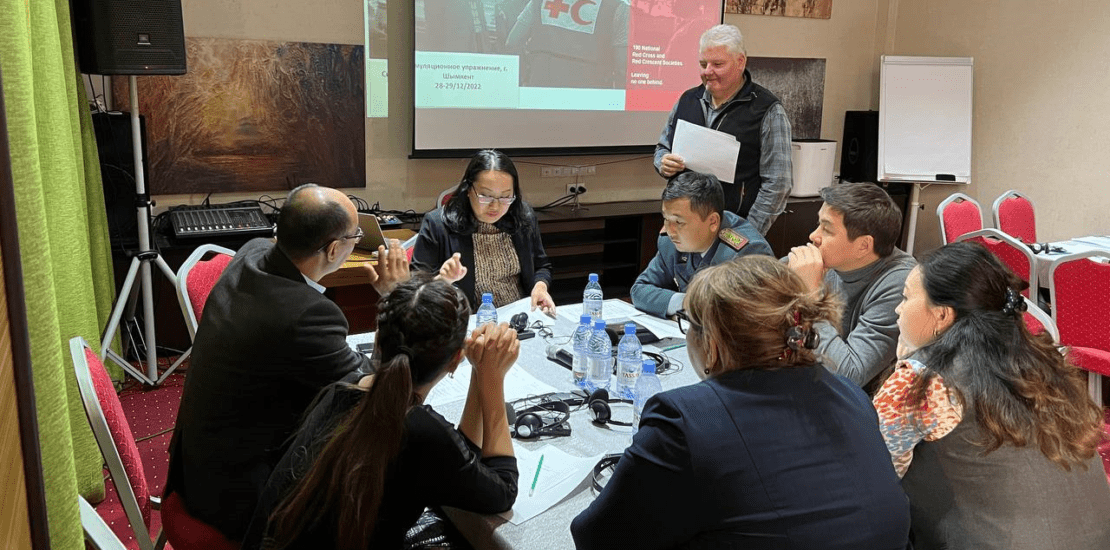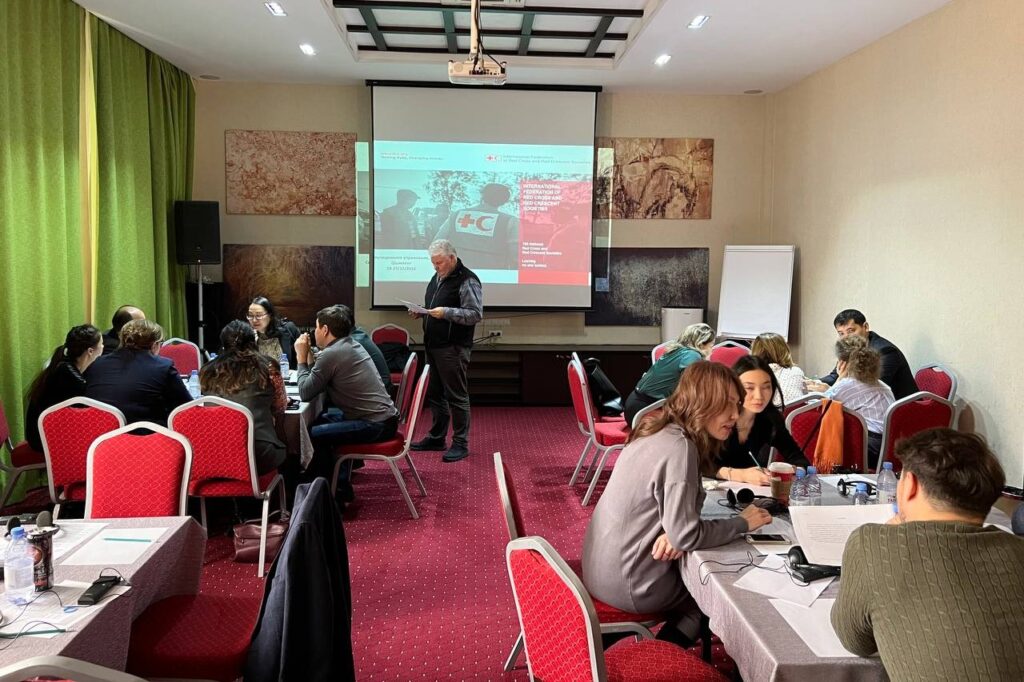- November 30, 2022
- Posted by: Red Crescent Society of Kazakhstan
- Category: News

The Red Crescent of Kazakhstan, acting as auxiliary to the public authorities in the humanitarian field, it is the first among non-government organizations responding to emergencies and providing needs-based services to the most vulnerable communities at risk through its country-wide network composed of its headquarter and 18 regional branches.
The Red Crescent of Kazakhstan has its legal status confirmed by the President’s decree in 1992. Because of absence of the Red Crescent Law, it falls under the rule of the general law on public organizations, which significantly limits the capacity of the National Society to meet all its objectives in the area of disaster response, health and social assistance. Nevertheless, the Red Crescent responds to the most significant emergencies caused by natural disasters such as floods, droughts, cold waves and fires. In recent years, the National Society has faced new challenges responding to the manmade disasters (ammunition explosion), COVID-19 pandemic and civil unrest.
The current Contingency Plan of the Red Crescent mainly focuses on action to prepare and respond to natural disasters. A scenario for unrest situations was recently included in the plan. The latest situation developments in the region entail new hazards that can potentially lead to emergencies the country has never been exposed to in the past. In order to be better prepared and effectively respond to a population influx, the NS plans to organize a workshop to identify roles and responsibilities of stakeholders in responding to a refugee influx and develop a scenario and SoP for the refugee influx context in 2022. The developed operational procedures will be tested with the stakeholders (government agencies, UN, RCRC Movement partners) during the simulation exercise as part of the NDRT training in 2023.

The workshop will be a table-top exercise on potential refugee influx with participation of local authorities (Akimat) responsible for overall management of such type of a disaster, representatives of the Ministry of Internal Affairs – administrative police and migration service, public health services, the Ministry of Emergency Situations (regional department of ES), technical assistance from IFRC, ICRC and UN agencies such as UNHCR and UNICEF. The Red Crescent will be represented by key HQ staff (leadership, head of departments, communication specialist, logistics, FA & Disaster Response coordinators) as well as branch representatives from Astana city, Shymkent city, Zhambyl, Kyzylorda, Mangystau, Eastern Kazakhstan, Semey and Almaty regions. Selected branches might be potentially affected by Afghan refugees’ influx from the impacted immediate neighboring countries – Tajikistan, Uzbekistan and Turkmenistan.
The workshop will be organized in Turkistan region because it is the most southern region of the country that has the longest borderline with Uzbekistan and is at a higher risk of Afghan refugee influx.
Aim and scope of the workshop:
As part of it’s Contingency plan revision process, the Red Crescent Society of Kazakhstan is planning to identify roles of the different stakeholders during the population movement (refugee influx) response, develop scenario and standard operational procedures for population movement with focus on movement across borders. IFRC is considering the deployment of facilitator(s) to co-facilitate with the Red Crescent and will offer technical assistance in developing/finalizing the relevant SoP
